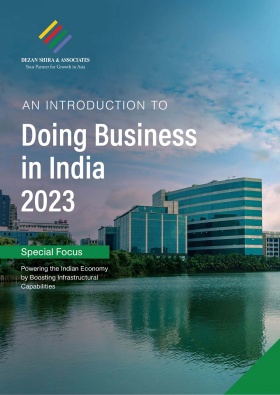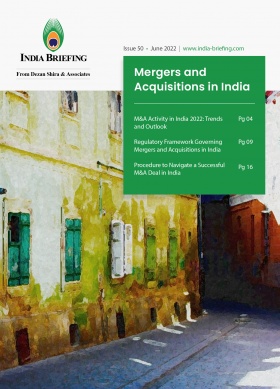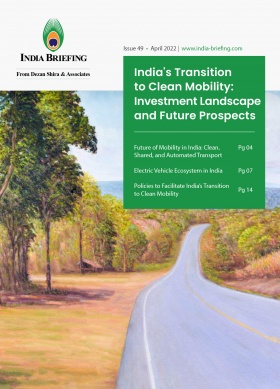India’s FAME-II Scheme for Electric Vehicles Gets 80% Bump in Budget Allocation
India’s budget allocation for the FAME-II scheme to incentivize clean mobility for FY24 is an estimated INR 51.72 billion and underlines the government’s ambitions to meet climate action targets while also reducing fossil fuel dependency and energy imports. Implementation of the scheme has also tightened as market players must meet strict localization targets.
India currently has the world’s third largest market for automobiles by sales but a negligible electric vehicle consumer base. Subsidies via the FAME-II scheme are meant to lower costs and increase the market appeal for electric and hybrid vehicles. At the same time, the government is keen on reducing import dependencies and growing the share of domestic value addition.
India’s federal government has allocated INR 51.72 billion (approx. US$631 million) towards its flagship scheme, FAME-II, for subsidizing and promoting the adoption of clean energy vehicles. FAME-II stands for the Faster Adoption and Manufacturing of (Hybrid and) Electric Vehicle in India.
This is an 80 percent jump in budget allocation from previous years, as seen in the table below.
FAME-II subsidy allocation in central budget
|
FY 2020-21 |
INR 3.18 billion (US$38.78 million) |
|
FY 2021-22 |
INR 8 billion (US$97.57 million) |
|
FY 2022-23 |
INR 28.98 billion (US$353.45 million) |
|
FY 2023-24 (Budget Estimates) |
INR 51.72 billion (US$630.81 million) |
Source: Government of India
While the budget allocation for FAME-II saw a utilization rate of 46 percent in FY21, it has been fully utilized in FY22 and FY23. The trend indicates India’s seriousness about pushing clean mobility and moving steadily towards its long-term carbon emissions target.
While the market for EVs and hybrid vehicles is at a nascent stage in the country, the government is keen to create an enabling system through consumer incentives, expanding charging infrastructure, and scrapping old polluting vehicles. Besides, more and more public transport is transitioning to electric mode in states like Delhi, Kerala, Telangana, among others.
|
Electric vehicle |
Total approximate incentive |
Approximate size of battery |
|
2-Wheelers |
INR 15,000/- per kWh up to 40% of vehicle cost |
2kWh |
|
3-Wheelers |
INR 10,000/- per kWh |
5kWh |
|
4-Wheelers |
INR 10,000/- per kWh |
15kWh |
|
e-Buses |
INR 20,000/- per kWh |
250kWh |
|
e-Trucks |
INR 20,000/- per kWh |
|
Source: Niti Aayog
Dominant beneficiaries are electric two-wheelers
Thus far, electric two-wheelers are the dominant beneficiaries of the FAME-II scheme, finding more appetite among Indian consumers, especially as fuel costs rise and prolonged inflation impact disposable incomes.
At the end of 2022, around 710,000 electric two-wheelers had availed FAME-II subsidies. Also, 7210 electric buses had been sanctioned and 2877 charging stations were approved. The FAME-II scheme aims to provide subsidies to 7090 electric buses and a maximum of 1 million electric two-wheelers.
Market landscape for electric vehicles in India
According to The Economic Survey 2023, India’s domestic EV market will grow at a compound annual growth rate (CAGR) of 49 percent between 2022 and 2030 and will see 10 million units in annual sales by 2030. Moreover, the EV industry will create around 50 million direct and indirect jobs by 2030.
As per data registered on the VAHAN portal, India’s e-governance application under the National Transport Project, 999,949 EVs were sold in 2022.
In January, Ola Electric topped the number of vehicle registrations at 18,220 units, followed by TVS Motor Company and Ather Energy. The firms emerged as market leaders in their segment at the end of 2022, with Hero Electric, Okinawa Scooters, and smaller players losing out. ET noted that Bajaj Auto managed only a two percent increase in market share from a low base and Ampere, one percent.
Overall, registration of electric two-wheelers experienced a marginal decline amid the government’s tightening of FAME-II subsidies.
Meanwhile, production-linked incentive (PLI) schemes for the ACC battery and automobile and auto component manufacturing sectors – align with FAME-II goals – and are cumulatively set to attract investments of up to INR 1 trillion. It is anticipated that as production costs reduce, EVs will become a more viable choice for consumers.
India is, as of December 2022, the world’s third largest automobile market by sales – surpassing Germany and Japan – and the race is on for manufacturers and policymakers to work together to redirect demand towards cleaner energy alternatives.
Tightening scrutiny over FAME-II subsidy deployment
Since last year, the government has dialed up the scrutiny on FAME-II scheme’s localization criteria. It is why some EV firms have been disqualified from benefits. FAME-II subsidies are now being reportedly paid at a 100-day lag, increasing working capital needs of firms.
In the last two years, both Ather Energy and Bajaj Chetak were among companies that faced issues in their subsidy disbursements – the government being keen to track any indirect imports through suppliers. It is reported that Ampere has reorganized its supply chain with the firm claiming a 60 percent localization rate.
Meanwhile, Business Standard reported last year that both Hero Electric and Okinawa were told not to upload their vehicle sale data for eligibility under the FAME-II subsidy scheme and their incentive payments were suspended.
Under FAME-II, at least 50 percent of the vehicle value must be added in India for electric two-wheelers, three-wheelers, and four-wheelers, while it is 40 percent localization for electric buses.
Companies now have to report their value addition at each stage on the government’s portal for which a digital mechanism (ERP system of original equipment manufacturers) is in place. The ERP system records the batch number, vehicle model, variant, and component, among other details. Multiple allegations had been cast on EV makers trying to work around the scheme’s localization requirements, leading the government to digitize compliance tracking.
In December of last year, Business Standard was reporting that The Society of Manufacturers of Electric Vehicles (SMEV) had petitioned the government to extend the localization mandate by another 12-18 months as the domestic supply chain was not sufficiently developed.
New electric car battery safety regulations kick in
Besides achieving stipulated localization rates in component sourcing and manufacturing, the Indian government has also released battery safety regulations. These have come in two phases; the first phase in December 2022 and the second phase in April 2023. Together, these could raise the costs of electric two-wheelers by INR 8000 per unit.
From December 1, 2022, under the new battery safety regulations, EVs must have smart battery management and if the battery temperature crosses a specified threshold, the charging should automatically turn off.
From April 1, 2023, technical standards like IP67 – which is a rating that guarantees battery protection from water seepage; thermal propagation; and requirement of a certain number of gas and temperature sensors to track battery health will become mandatory.
Ather, Ola, and TVS have reportedly claimed they have many of these measures in place, which means that smaller firms may suffer a larger share of the compliance burden and lose out market share. Still, these measures will ensure Indian EVs and hybrid vehicles meet global standards and more importantly, will assuage consumer concerns over safety.
About Us
India Briefing is produced by Dezan Shira & Associates. The firm assists foreign investors throughout Asia from offices across the world, including in Delhi and Mumbai. Readers may write to india@dezshira.com for more support on doing business in in India.
We also maintain offices or have alliance partners assisting foreign investors in Indonesia, Singapore, Vietnam, Philippines, Malaysia, Thailand, Italy, Germany, and the United States, in addition to practices in Bangladesh and Russia.
- Previous Article Highlights of the Indian Economic Survey 2022-23
- Next Article Integrating with Global Value Chains: Sector Opportunities and Challenges in India









